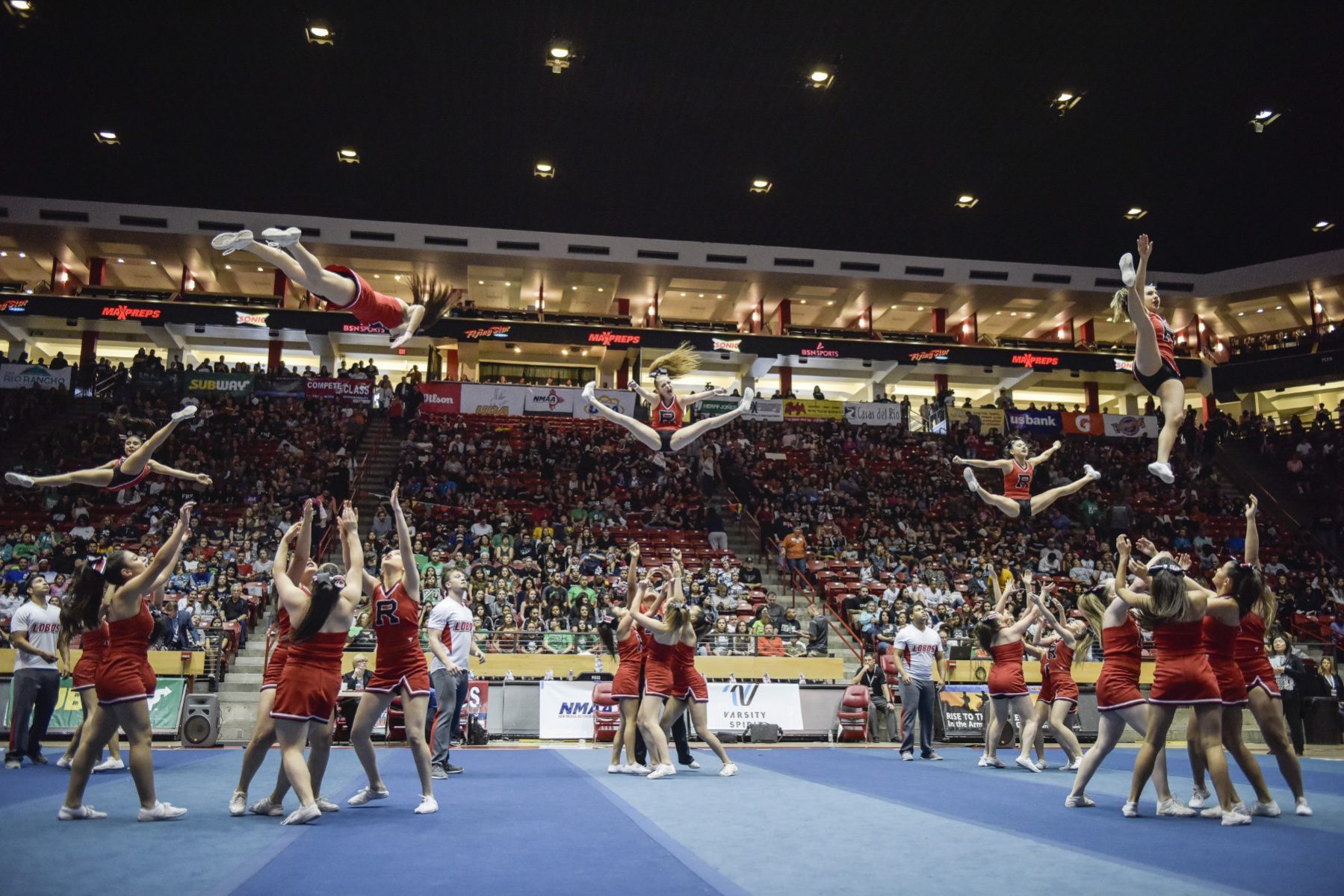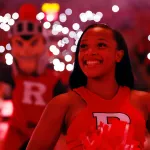The International Olympic Committee (IOC) recognized cheerleading as a sport late last month, and things are now moving faster than a tumbling pass. Jeff Webb, the head of the International Cheer Union (ICU), has made it known that he intends to do all he can to make sure cheer teams are competing at the Los Angeles Olympics in 2028.
Cheerleaders past and present and their fans (Snooki included) are thrilled to see their athleticism and artistry finally recognized at this level. An Olympic future has the potential to up the level of competition and perhaps settle — once and for all — a gendered debate about if cheer is a sport, and perhaps disrupt some stereotypes in the process.
The ICU has spent the past two decades assuring that organizations like the IOC think it is. In 2000, Webb left Varsity Spirit, the preeminent, some would say monopolizing, All Star cheer organization (All Star is the sport’s competition arm, which is largely unassociated with collegiate and high school sideline cheer programs). He went on to head up the ICU, founded in 2004, where he began developing cheerleading as a sport across the globe. His intent was to move it toward IOC recognition, which requires an international governing body and participation by a certain number of member countries. Instantly, 20 countries signed on with individual federations. Now, 166 member countries around the world are a part of the ICU.
That work culminated with the IOC vote last week. And yet, even with Olympic recognition and documentaries such as Netflix’s “Cheer” detailing the athleticism of the sport, it has struggled to shake its pom poms-and-short-skirts reputation. Natalie Giuce Adams, an associate professor at the University of Alabama and the co-author of “Cheerleader! An American Icon” told The 19th, said that is “absolutely” because of gender.
Adams explained that from its origins in the 1880s through the 1950s, cheerleading was a men’s activity.
“You can read reports from the early 1900s about how being a cheerleader used to be only second to being a quarterback on a college campus,” Adams said, pointing out that the phrase “Big Man on Campus” largely originated as a descriptor of these early collegiate cheerleaders.
But when women entered the sport in the 1950s, it “became feminized and subsequently sexualized,” becoming not only an activity that was ubiquitous to American culture, but also “one of those activities that we love to hate.”
The present popularity of American cheerleading, Adams said, is inseparable from the reintroduction of men into the All Star leagues of the sport in the 1990s, when it became an activity driven around competition. The move towards mixed-gender teams began to lend the sport gravitas.
But the prevalence of mixed-gender teams has plenty of other benefits. Adams calls cheer “one of the best examples of a sport where men and women are really equal.” They share teams, coaching, go through the same training and compete in the same competitions.
Looking ahead at future Olympic participation, experts say to anticipate both mixed-gender and all-women’s teams competing.
“I think it’s going to be exciting, and being able to be a part of the Olympics and introducing this co-ed format could have an impact on many other sports …There are all of these other dynamics you’re introduced to when you’re on a co-ed team that you may not be used to otherwise,” said Bill Seely, the current president of Varsity Spirit. “To the extent that other sports see this and realize they can participate in that, it’s fantastic.”
Mixed-gender team sports don’t currently exist on a large scale in the Olympics — archery, some rifle events and some relay events in the Summer Games, and pairs skating and curling are the dominant mixed-gender events in the Winter Games.
Gender theorists see a high-profile, mixed-gender sport as a potential game-changer.
“We might see cheerleading emerging as a source of radical transformation when it comes to gender and sports,” said Ellen Staurowsky, a professor of sports media at Ithaca College. “There is the potential for it to present gender in a whole new way.”
In cheer, typically, men are lifting and throwing women, who in turn are expected to make contorting their bodies look easy. So gendered roles do still exist, but some of that is starting to fade, Adams said. Historically, men were excluded from dance sections of routines. Now, they’re increasingly performing. They’re also encouraged to “make faces,” the mega-watt smiles and exaggerated expressions cheerleaders wear while performing. Now men in cheer, once expected to present as staunch stoics, are encouraged to express themselves.
But there is still a long way to go, said Cheryl Cooky, an associate professor of American studies and women’s, gender and sexuality studies at Purdue University who specializes in issues pertaining to gender and sports.
“When we get to the point where women are serving as the bases of the pyramid and men are doing flips and turns, then we’ll have gotten somewhere,” she said.
But because of this, the future of all-women’s teams and mixed-gender teams alike stands to potentially topple any stereotypes. An all-women’s team would, inevitably, require women to assume the traditionally held role of bases, who serve to support and throw the flyers into the air during stunts. An all-woman team with no strict division of athletic labor along traditional gender lines might actually help disrupt ideas about the capabilities of women athletes even more than mixed-gender teams.
All of this — in addition to death-defying stunting and tumbling routines — is what makes the prospect of a 2028 Olympic gymnastics debut so exciting for both sports fans and gender theorists alike.
“Everyone trivializes cheerleading and thinks of it as frivolous and not worth serious cultural and sports analysis. So wouldn’t it be ironic if cheerleading is what forces everyone to have a reckoning about gender and sports participation?” Adams asked. “I think it has that potential.”
The IOC recognition doesn’t mean immediate entry into the Olympics. After gaining permanent recognition, a sport’s governing body must then gain International Sports Federation (IF) status and implement the IOC’s official anti-doping code. At this point, a sport’s IF can then apply for admittance into a specific year’s Games. It can be a time-consuming process, which is why, at earliest, cheerleading won’t be gracing TV screens before the 2028 Games.
The viability of cheer as an Olympic sport will raise the stakes for athletes. The U.S. national team is typically selected in early January and spends about two weeks training together before heading to the ICU World Championship in Orlando. Seely told The 19th that he anticipates that a future Olympic team will train together for a longer period of time — especially since the increased presence and accomplishment of international ICU member teams has continued to raise the bar.
Seely said that while he anticipates the IOC announcement will result in a bigger emphasis on skill development in elite gyms, “It’s also one of those things where we have to be super responsible and make sure that we’re doing it in the best way to develop young people and don’t just take the elite. We need to have a broad-based approach.”







